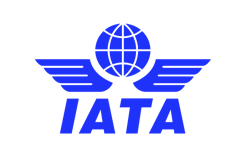oneworld Alliance Joins IATA CO2 Connect
The International Air Transport Association (IATA) and the oneworld Alliance will work together in the field of CO2 emission calculations with all 13 oneworld member airlines committing to contributing operational data to IATA’s CO2 Connect emissions calculator. This will further improve the quality and accuracy of the tool, as the percentage of airline-specific fuel burn data used by the calculator will substantially increase, with the data provided by the following oneworld member airlines: Alaska Airlines, American Airlines, British Airways, Cathay Pacific, Finnair, Iberia, Japan Airlines, Malaysia Airlines, Qatar Airways, Qantas, Royal Air Maroc, Royal Jordanian, and SriLankan Airlines.
“Travelers want to make informed choices regarding their CO2 footprint and IATA CO2 Connect set out to provide CO2 emission calculations based on operational data. We are delighted that oneworld will become the first airline alliance to join this initiative, bringing in its 13 member airlines as data contributors. Their decision underscores the importance of the industry’s objective of providing consistency and alignment in this field,” said IATA senior vice president, sustainability and chief economist Marie Owens Thomsen.
“oneworld is proud to be the first global airline alliance to support IATA’s work to provide customers with high-quality estimates of the CO2 emissions of their flights. Our collaboration with IATA on CO2 Connect will in turn help key players across the aviation sector, including airlines, aircraft manufacturers and travel management companies among others, to make better and more informed choices for travelers and enhanced ESG reporting,” said Grace Cheung, oneworld environmental and sustainability board chair and general manager sustainability, Cathay Pacific.
IATA launched CO2 Connect in June 2022, with the objective of using member airline data, such as fuel burn, belly cargo and load factors, to provide high-quality per flight passenger CO2 emission calculations. Paired with other IATA and open market data sources, IATA CO2 Connect calculates CO2 emissions for 74 aircraft types, representing approximately 98 percent of the active global passenger fleet, and considers traffic data from 881 aircraft operators representing approximately 93 percent of global air travel.
IATA CO2 Connect data calculations are available to industry partners through an API or flat file, as well as via airline sales channels and travel management companies.
In a recent opinion poll, 90 percent of travelers stated that they have a responsibility to know about the carbon emissions of their flight, but only two in five actually do so. And while 84 percent of those surveyed acknowledged that it is easy to find tools to accurately estimate their carbon emissions, the vast majority (90 percent) expect airlines or travel agents to provide them with this information, indicating a reliance on the industry to proactively inform passengers about the carbon impact of their flights.
IATA CO2 Connect will continue to evolve and include new features, having just launched a corporate reporting solution to support the demand to accurately report CO2 emissions from business travel, and next year will be introducing CO2 compensation solutions to support airlines and other industry partners. A Cargo calculator is also in development to launch in 2024, supporting demands from shippers and freight forwarders to access accurate CO2 emissions derived from actual airline data.
Methodology
IATA CO2 Connect utilizes the Passenger CO2 Calculation Methodology (RP 1726) adopted by IATA’s Passenger Service Conference in March 2022. This was conceived with support from leading partners from 20 airlines and major aircraft manufacturers, in consultation with international standard-setting bodies and logistics services providers. The methodology includes factors such as:
- Guidance on fuel measurement, aligned with the Carbon Offsetting and Reduction Scheme for International Aviation (CORSIA)
- Clearly defined scope to calculate CO2 emissions in relation to airlines’ flying activities
- Guidance on non-CO2 related emissions and Radiative Forcing Index (RFI)
- Weight based calculation principle: allocation of CO2 emission between passenger and belly cargo
- Guidance on passenger weight, using actual and standard weight
- Emissions factor for conversion of jet fuel consumption to CO2, fully aligned with CORSIA
- Cabin class weighting and multipliers to reflect different cabin configurations of airlines
- Guidance on carbon offsets and sustainable aviation fuel (SAF) as part of the CO2 calculation.
